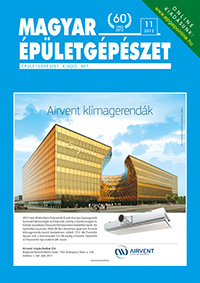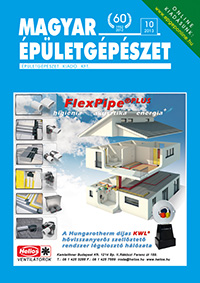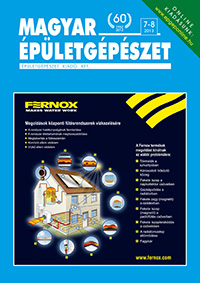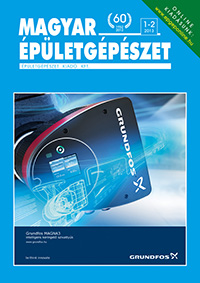Lapszámok

2013 11. szám
- Csík Árpád PhD - Dr. Csoknyai Tamás PhD - Botzheim János PhD:
EnergOpt – Épületenergetikai optimalizáció és lehetséges alkalmazásai I. rész: az optimalizáció elméleti alapjai - Szabó Gergely:
A függönyfal hatása a mesterséges világításra - Érces Norbert:
Önkormányzati épületek hőtermelő-oldali energetikai korszerűsítése, megújuló energiaforrások felhasználásával - Sommer, Klaus - Mesenhöller, Eva:
Practical experience with a fuel cell unit for Combined Heat and Power (CHP) generation on the building level - Gáti György:
Van új a nap alatt, avagy figyelemre méltó fejlődés az LG levegő – levegő hőszivattyúk legújabb berendezéseinél - Kovács István - Szemes Attila:
Légtechnika családi házakban – hőcserélős berendezések alkalmazása - Daniella Kereskedelmi Kft.:
Ne legyen fagyos a hangulat! - Modern fagyvédelmi megoldások - Grundfos South East Europe Kft.:
Megújul a Grundfos Hydro Multi-E kompakt nyomásfokozó sorozat - Dr. Csury István:
Pápa városi műjégpálya hűtőtechnológiai kialakítása - RÁKOSY GLASS Kft.:
Üveg, ami fűt – és teljesen átlátszó - Colt Hungária Kft.:
Adiabatikus hűtés a 21. században - Rébay Lajos:
Tanulságos életpályák – Dr. Magyar Tamás
Hozzászólások
Practical experience with a fuel cell unit for Combined Heat and Power (CHP) generation on the building level
Még nem érkezett hozzászólás!
Sommer, Klaus - Mesenhöller, Eva
Practical experience with a fuel cell unit for Combined Heat and Power (CHP) generation on the building level
The previous REHVA Journal article “Micro-Combined Heat and Power (Micro-CHP) Appliances for one- or two-family houses for more energy efficiency” [1] described the common technologies “Stirling Engine”, “Internal Combustion Engine” and “Fuel Cell” with the help of available CHP-units. With this article the authors would like to discuss their experience with a fuel cell-based micro-CHP Unit that is highly efficient in terms of electrical output. This experience was gained during research work at the laboratory of heating technology at Cologne University of Applied Sciences [2]. Some of the findings were already presented in 2012 ([3] and [4]).
Figure 1 shows the test arrangement of the investigated fuel cell unit. This unit is called BlueGEN and is manufactured by CFC Ltd. an Australian-German company. It simultaneously generates heat and power. On the electrical side it is connected, in parallel, to the public grid in order to export power or obtain power. On the fuel side it is connected to the public natural gas grid. A heating water circuit delivers the generated heat from this fuel cell unit directly to the connected 680 L heating water buffer tank displayed below. The thermal performance of this unit is being tested by buffer tank heat loading via the fuel cell unit and the heatingwater circuit. Figure 2 shows the schematic depiction of how the test arrangement works.










